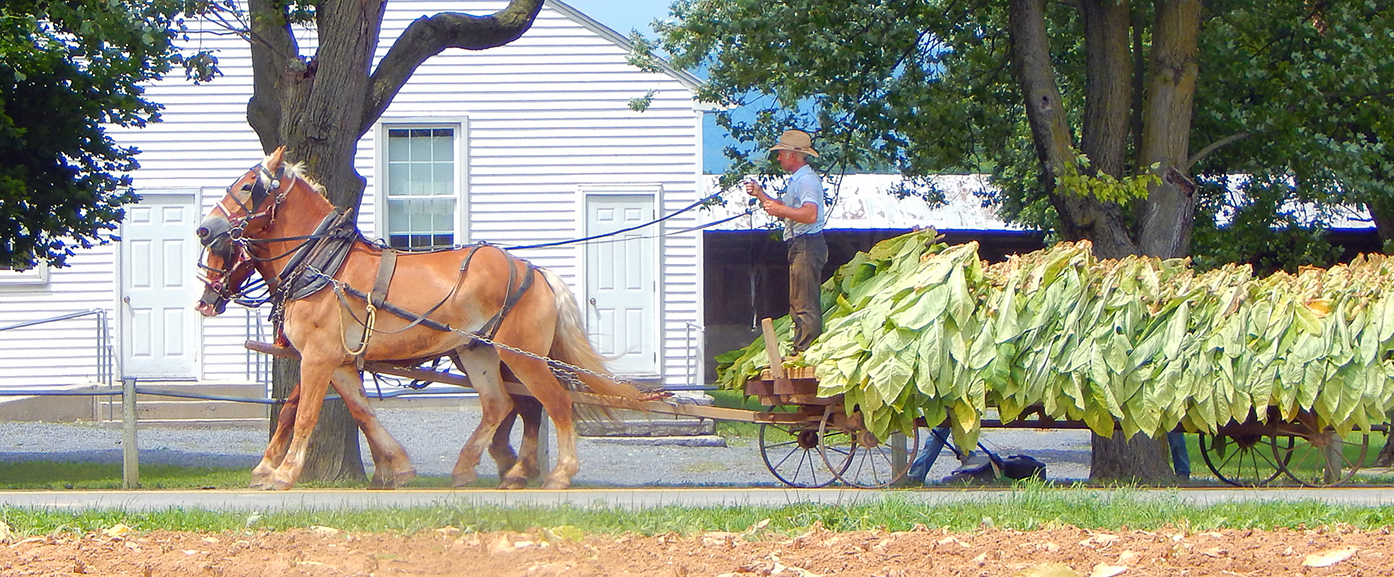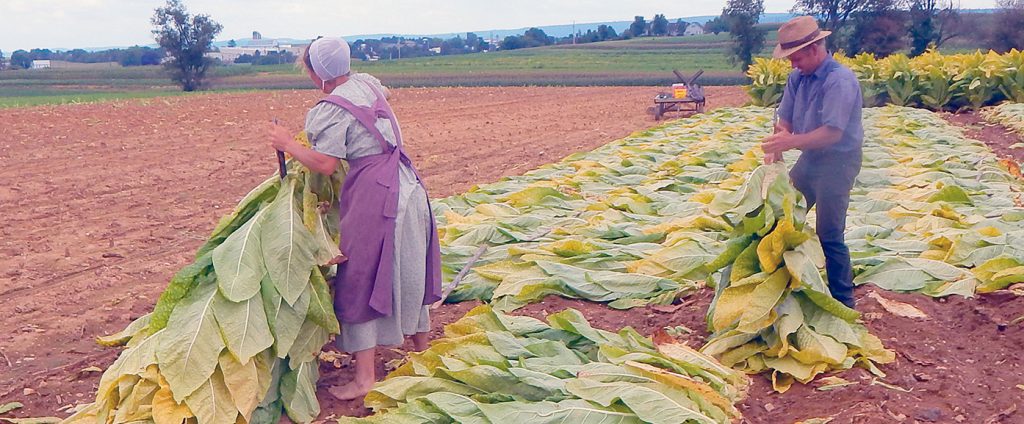
Written by Art Petrosemolo
It seems every week I happen on something new and interesting in the farms around our New Holland, Sycamore Springs, home.
I have met Amish and Mennonite families who have become good friends and who I visit with every week. I have been the recipient of their largesse almost every time, coming home with strawberries, cherries, beans, corn, peaches and other vegetables. I reciprocate as I can, making them trays of lasagna and meatballs or bringing half gallons of Lapp’s ice cream and hoping they have a freezer!
Well, in late summer, as I was driving PA 772 back from a meeting with my Lititz Record editor for coffee, I spotted the first of the tobacco fields with the large green leaves turning gold. I saw wagons with hanging stalks in the middle of the field and knew it must be the beginning of the 2017 harvest.
A little research shows that tobacco is one of the leading cash crops in the county and accounts for 70 percent of the 10,000 acres of tobacco grown in the state. There are 964 tobacco operations in Lancaster County and Lancaster is ranked in the top 10 in the country in tobacco production: 1st in number of operations, 8th in sales, 9th in pounds of production and 10th in acres harvested. Most of the Lancaster tobacco is used in cigarettes or chewing tobacco.
Well if it entails photographs, I’m in. As many of my friends know, I actually write so I can photograph and feel the image is as important, sometimes more important, than the story itself.
I knew my Mennonite friends on Rhineback Road in New Holland were growing tobacco. The family’s three farms are next to each other and surrounded with fields of tobacco and other cash crops. I made a beeline for the “homestead” farm to talk to the mom and dad or one of the eight adult children.
When no one was home, I started to search for bicycles. I have learned that bicycles are the prime source of short transportation for Mennonites young and old. Within minutes, I found eight bicycles parked by the side of a tobacco field and an all-hands operation a quarter-mile away.
My wife Tina was with me and we parked near the field and headed out over the rough terrain of cut stalks.
My friends are always glad (I think) to see me. I believe they really think I am from Mars but they welcome me every time. I got a quick education on harvesting tobacco and I am still shaking my head at this labor-intensive and what can be (I think) a pretty dangerous operation.
First, naturally, all the stalks have to be cut. But at least at this farm, it is not a mechanical operation. The stalks are cut individually with a shear, a hand device that looks like what you cut small limbs off a tree but with the cutter blade parallel to the ground so you don’t stoop (too much).
The cutting is done by section, always with an eye on the weather. The leaves, once cut, need to be moved to the barn and hung to dry before it rains. A couple of steps need to happen before the tobacco can be hung in the barn.
First, the stalks are all dropped in the same direction for ease of getting onto wooden laths which is something to see. A harvester – male or female – slides a six-inch sharpened spear over the five-foot wooden lath. Then a stalk of tobacco is lifted with one hand (while the second holds the lath with attached spear upright but pointing away from the body (your head)). Then the stalk is rammed down over the spear and onto the lath (while keeping the ramming hand eight-inches away from the spear/lath). The lath is filled with stalks and weighs about 40-50 pounds. It is laid in the field in one direction until the farm wagon, pulled by a pair of Haflinger horses, moves down the field. The workers heave the weighty laths onto the wagon until it is filled.
The wagon is driven right into the tobacco barn, which in this case was less than a mile away, where several workers – usually the men – hoist the tobacco filled laths onto rails where they will dry for up to three months. For a while, a single person can lift and place laths onto rails by standing on the farm wagon. But as the laths need to go higher into the barn, it takes two and three people to lift and pass the laths until they reach the highest portion of the barn.
My friends have 25 acres of tobacco. This translates into more than 100,000 pounds and they harvest it all with their own hands. They do not get help for this task and it can take days and days. They always have an eye out for wet weather, which stops the operation immediately as the tobacco must be harvested and stored dry.
My friends tell me that from a 50-pound lath of just-harvested tobacco, they hope to yield about two to three pounds of dry leaf for sale. The leaves are baled and wrapped for transport in the fall. My friends have a contract with one of the large tobacco/cigarette companies who will be collecting tobacco before year’s end.
For me, the harvesting images were spectacular and learning about the operation fascinating. It was just another exciting adventure for me and the photos were used as a photo spread in the Lititz Record Express.
